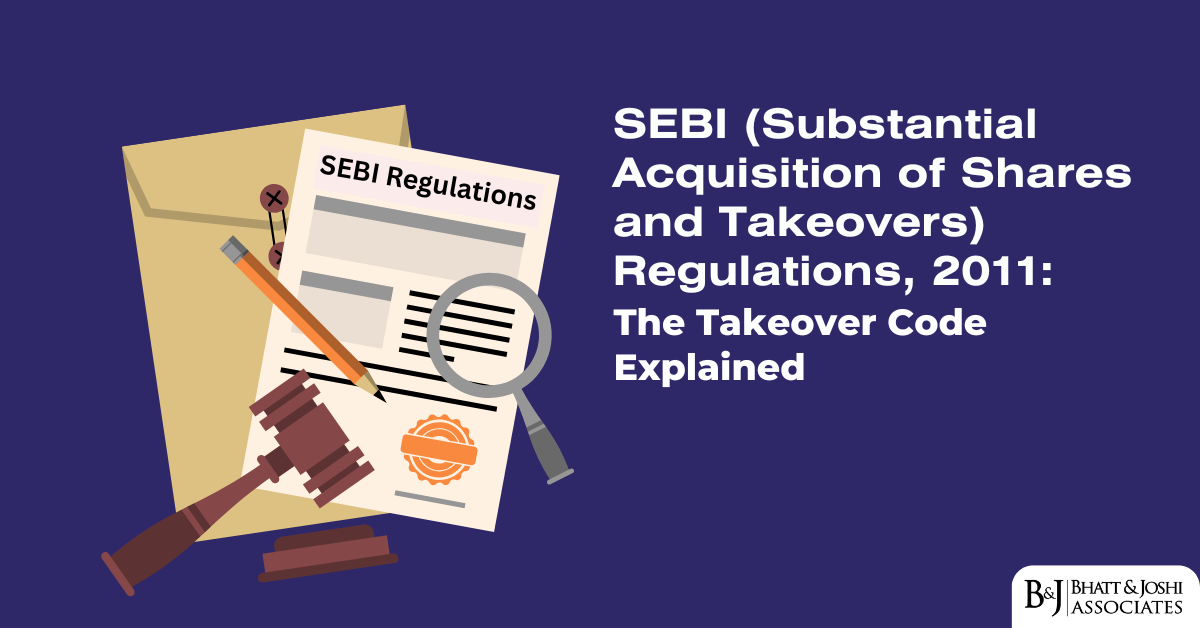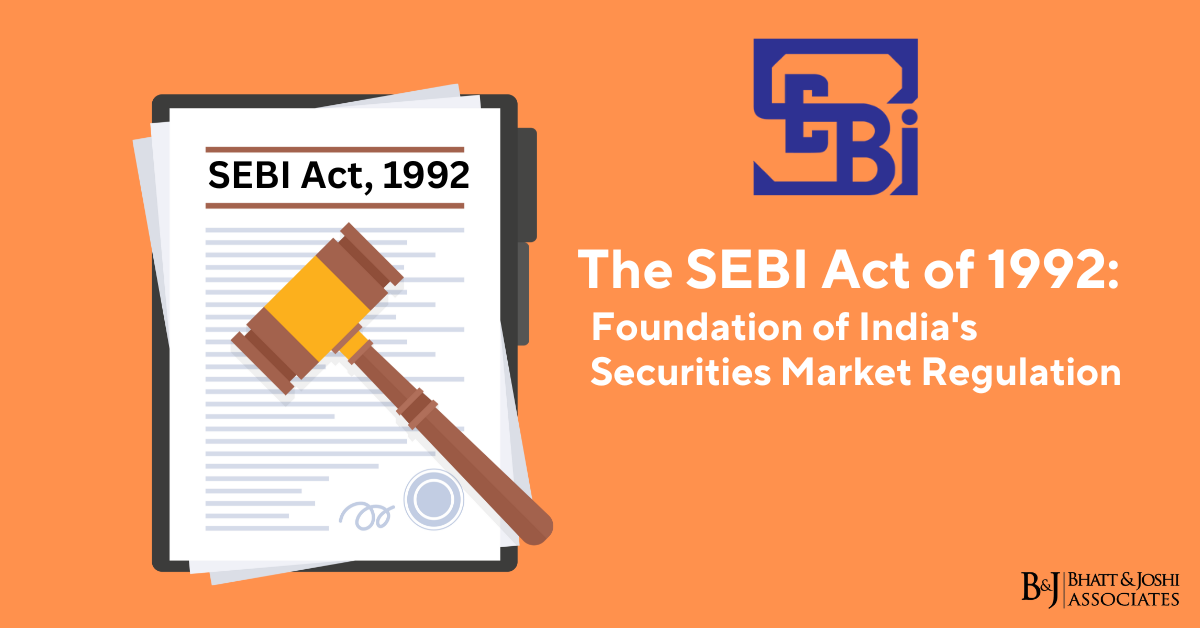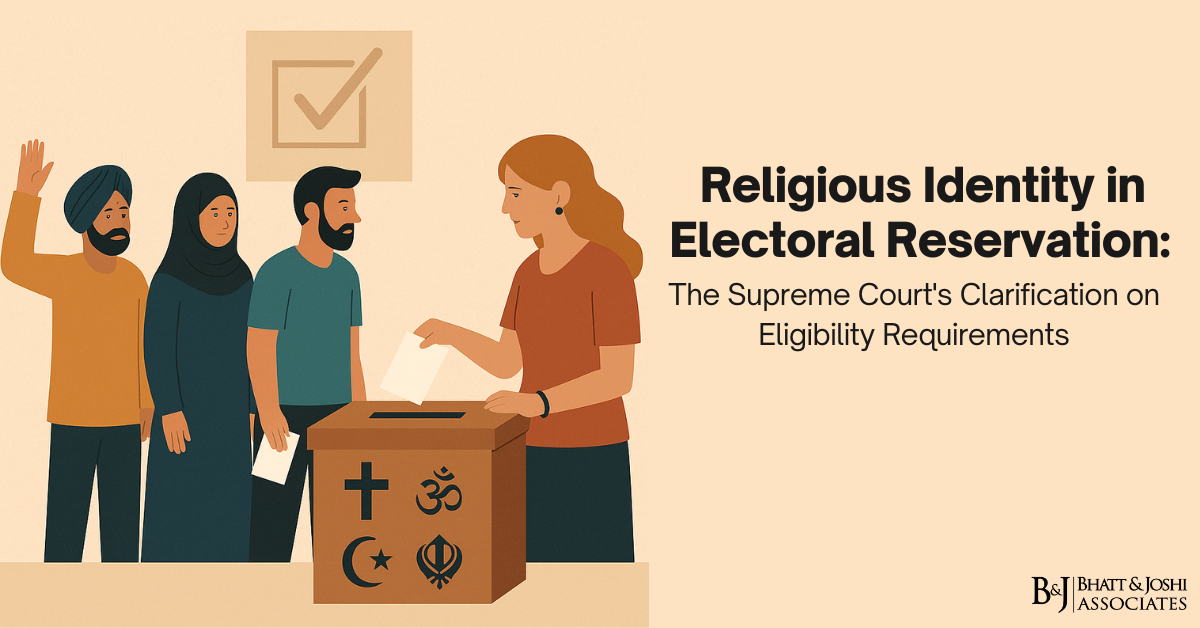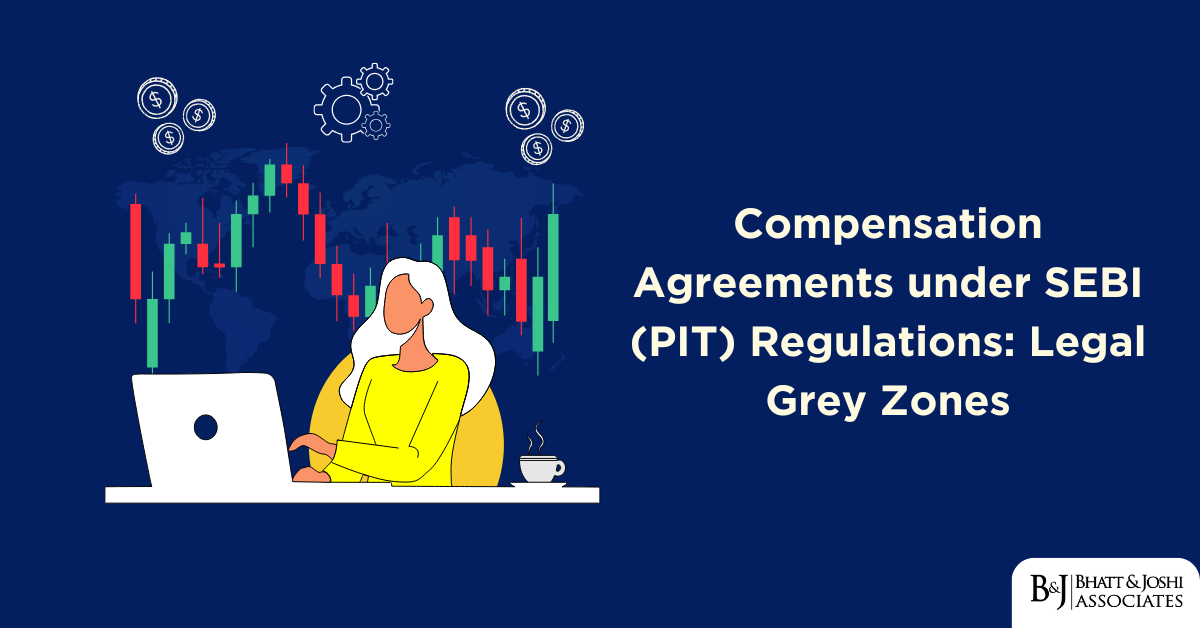Introduction
The SEBI (Substantial Acquisition of Shares and Takeovers) Regulations, 2011, commonly known as the Takeover Code, provide rules for acquiring shares in listed Indian companies. These regulations are designed to ensure that when someone buys a large number of shares or takes control of a company, they do so in a fair and transparent manner.
The Takeover Code protects existing shareholders, especially minority shareholders, by giving them an opportunity to exit the company at a fair price when control changes hands. It does this by requiring acquirers to make an “open offer” to buy shares from the public when their stake crosses certain thresholds.
These regulations apply to all listed companies in India and affect various stakeholders including promoters, institutional investors, and retail shareholders. The Takeover Code is particularly important in the Indian context where many companies have significant promoter holdings.
The SEBI Takeover Code 2011 replaced the earlier 1997 Takeover Code and brought several significant changes to align with evolving market practices and global standards. They simplified the regulatory framework while strengthening investor protection measures.
Historical Background and Evolution
The regulation of takeovers in India began with the SEBI (Substantial Acquisition of Shares and Takeovers) Regulations, 1994. These first regulations were basic and had many gaps that needed to be filled as the market developed.
In 1997, SEBI introduced a more comprehensive Takeover Code based on the recommendations of the Bhagwati Committee. This 1997 Code served as the main framework for regulating takeovers for the next 14 years, though it underwent several amendments during this period.
By 2010, it became clear that a complete overhaul was needed rather than more piecemeal changes. The market had evolved significantly, and there were many new types of transactions that weren’t adequately covered by the 1997 regulations.
SEBI appointed a committee led by Mr. C. Achuthan to review the Takeover Regulations. This committee submitted its report in 2010 with several far-reaching recommendations, many of which were incorporated into the SEBI Takeover Code 2011
The SEBI Takeover Code 2011 introduced several major changes. It increased the open offer trigger threshold from 15% to 25%, raised the minimum open offer size from 20% to 26%, and simplified the calculation of offer price to make it more equitable for all shareholders.
It also introduced the concept of “control” as a trigger for open offers, regardless of share acquisition percentages. This was a significant development as it recognized that control could change hands even without substantial share purchases.
Another important change was the elimination of the non-compete fee that acquirers could earlier pay to promoters over and above the price paid to public shareholders. This ensured that all shareholders were treated equally during takeovers.
Disclosure Requirements for Acquisition of Shares
Chapter II of the SEBI Takeover Code 2011 deals with disclosure requirements. These requirements ensure transparency about who owns significant stakes in listed companies and when these stakes change hands.
According to Regulation 29, any person who acquires 5% or more shares in a listed company must disclose this to the company and to the stock exchanges within 2 working days. This is called the initial disclosure requirement.
The regulation states: “Any acquirer who acquires shares or voting rights in a target company which taken together with shares or voting rights, if any, held by him and by persons acting in concert with him in such target company, aggregates to five per cent or more of the shares of such target company, shall disclose their aggregate shareholding and voting rights in such target company.”
Further, once a person already holds 5% or more, any change in their shareholding by 2% or more (up or down) must also be disclosed within 2 working days. This helps investors track significant changes in shareholding patterns.
Annual disclosure is also required from every person holding 25% or more shares or voting rights in a target company. They must disclose their holdings as of March 31 each year, even if there has been no change during the year.
These disclosures must include details of the acquirer, the target company, the stock exchanges where the company is listed, and the exact shareholding before and after the acquisition. The format for these disclosures is specified in the regulations.
Additionally, Regulation 30 requires promoters (founders or major shareholders who control the company) to disclose any encumbrance (like pledges) on their shares. This information is important because pledged shares might indicate financial stress or could potentially change hands if the pledge is invoked.
Open Offer Thresholds and Requirements
Chapter III of the Takeover Code contains the heart of the regulations – the rules about mandatory open offers. Regulation 3 sets the thresholds that trigger the requirement to make an open offer to public shareholders.
According to Regulation 3(1), any person acquiring 25% or more of the voting rights in a target company must make an open offer to all public shareholders. This is the most common trigger for open offers in India.
The regulation states: “No acquirer shall acquire shares or voting rights in a target company which taken together with shares or voting rights, if any, held by him and by persons acting in concert with him in such target company, entitle them to exercise twenty-five per cent or more of the voting rights in such target company unless the acquirer makes a public announcement of an open offer for acquiring shares of such target company.”
Even after crossing the 25% threshold, further acquisition triggers are in place. Regulation 3(2) states that any person holding between 25% and 75% of shares who acquires more than 5% shares in a financial year must also make an open offer. This prevents creeping acquisitions without giving exit opportunities to public shareholders.
Regulation 4 provides another trigger based on control rather than percentages. It states: “Irrespective of acquisition or holding of shares or voting rights in a target company, no acquirer shall acquire, directly or indirectly, control over such target company unless the acquirer makes a public announcement of an open offer for acquiring shares of such target company.”
The open offer must be for at least 26% of the total shares of the target company. This is mentioned in Regulation 7: “The open offer for acquiring shares to be made by the acquirer and persons acting in concert with him shall be for at least twenty six per cent of total shares of the target company, as of tenth working day from the closure of the tendering period.”
The acquirer must follow a specified timeline for the open offer process. Within 2 working days of crossing the threshold, they must make a public announcement. Within 5 working days of this announcement, they must publish a detailed public statement with more information about the offer.
Exemptions from Open Offer
Chapter IV of the Takeover Code provides for certain situations where an acquirer may be exempted from making an open offer even if they cross the triggers mentioned in Chapter III.
Regulation 10 lists specific cases that are automatically exempt from open offer requirements. These include inheritance, gifts among immediate relatives, transfers among qualifying promoters, and corporate restructuring approved by courts or tribunals.
For example, Regulation 10(1)(a)(i) states: “Any acquisition pursuant to inter-se transfer of shares amongst qualifying persons, being, immediate relatives, promoters named in the shareholding pattern filed by the target company for not less than three years…”
Another important exemption is for debt restructuring. When lenders convert debt into equity as part of a restructuring plan approved by the Reserve Bank of India or a tribunal, this conversion is exempt from open offer requirements.
Buybacks and delisting offers also have exemptions, as do certain increases in voting rights due to share buybacks without actual acquisition of new shares. These exemptions recognize that in such cases, the increase in percentage holding is technical rather than substantive.
Besides these automatic exemptions, Regulation 11 allows SEBI to grant exemptions on a case-by-case basis. Acquirers can apply to SEBI with specific reasons why an exemption should be granted, and SEBI can consider factors like public interest and the interests of investors.
To get such exemptions, acquirers must apply to SEBI before making the acquisition. SEBI may grant the exemption with or without conditions, and its decision is final. This flexibility allows SEBI to address unique situations that may not fit neatly into the predefined exemption categories.
Determination of Offer Price
Chapter V of the Takeover Code deals with how to determine the price at which the open offer must be made. This is crucial because a fair price ensures that public shareholders get equitable treatment when control changes hands.
Regulation 8 provides a detailed formula for calculating the offer price. This formula is designed to ensure that public shareholders receive the highest of several possible prices, which typically include:
The highest price paid by the acquirer for any acquisition during the 26 weeks prior to the public announcement of the open offer. This prevents acquirers from paying more to some shareholders (like promoters) than to others.
The volume-weighted average price paid by the acquirer during the 60 trading days before the public announcement. This captures the acquirer’s recent acquisition history at a fair average.
The highest price paid for any acquisition during the 26 weeks prior to the date when the intention to acquire is announced or the voting rights are acquired. This covers situations where the market might have been influenced by early indications of a potential takeover.
The volume-weighted average market price for 60 trading days before the public announcement. This reflects the recent market valuation of the shares independent of the acquirer’s actions.
For indirect acquisitions (where control of the target company changes due to acquisition of its parent company), the regulations provide additional methods to ensure the offer price is fair. These include looking at the price paid for the parent company and allocating it proportionately to the target company.
Regulation 8(10) states: “Where the offer price is incapable of being determined under any of the preceding sub-regulations, the offer price shall be the fair price of shares of the target company to be determined by the acquirer and the manager to the open offer taking into account valuation parameters.”
This gives some flexibility when standard methods don’t apply, but requires professional valuation to ensure fairness. The regulations also provide for adjustment of the offer price for corporate actions like dividends, rights issues, or bonus issues that occur between the announcement and completion of the offer.
Conditional Offers and Competing Offers
Regulations 19 and 20 deal with conditional offers and competing offers, adding flexibility to the takeover process while ensuring fair treatment of all parties involved.
A conditional offer is one where the acquirer makes the offer conditional upon a minimum level of acceptance. Regulation 19 allows acquirers to specify that the offer will not proceed if they don’t receive a minimum number of shares. However, this minimum cannot be more than 50% of the offer size.
For example, if the open offer is for 26% of the company’s shares, the acquirer can make it conditional on receiving at least 13% (50% of 26%). If this minimum level is not reached, the acquirer can withdraw the offer, returning any shares already tendered.
Regulation 19(1) states: “An acquirer may make an open offer conditional as to the minimum level of acceptance. Where the offer is made conditional upon minimum level of acceptance, the acquirer and persons acting in concert with him shall not acquire, during the offer period, any shares in the target company except through the open offer process.”
Competing offers happen when multiple acquirers are interested in the same target company. Regulation 20 provides a framework for such situations, ensuring a fair bidding process that benefits shareholders.
If a competing offer is made during the original offer period, the offer period for both offers is extended to the same date. This gives shareholders time to consider both offers and choose the better one.
The competing offer must be for at least the same number of shares as the original offer, and at a price not lower than the original offer price. This ensures that competition only improves the terms for shareholders.
Regulation 20(8) states: “Upon the announcement of the competing offer, an acquirer who had made an earlier offer shall have the option to revise the terms of his open offer…” This allows for a bidding war that can benefit target company shareholders.
However, there are limits to prevent endless bidding wars. Regulation 20(2) specifies that no competing offer can be made after the 15th working day from the date of the detailed public statement of the original offer. This provides certainty about the timeline of the process.
Landmark Court Cases
Several important court and tribunal cases have shaped the interpretation and application of the SEBI Takeover Code 2011. These cases provide guidance on how the regulations should be understood in practice.
In Sanofi-Aventis v. SEBI (2013), the Securities Appellate Tribunal (SAT) dealt with the pricing of indirect acquisitions. Sanofi, a French company, had acquired Shantha Biotechnics, an Indian company, through its overseas parent.
The dispute was about how to calculate the open offer price. The SAT held: “In case of indirect acquisitions, the price paid for the overseas entity must be appropriately attributed to the Indian target company based on transparent and objective criteria. The acquirer cannot artificially lower the valuation of the Indian entity to reduce the open offer price.”
This judgment established important principles for valuing Indian companies in global transactions. It ensured that Indian shareholders receive fair value even when the acquisition happens at a foreign parent level.
The Zenotech Laboratories Shareholders v. SEBI (2010) case dealt with non-compete payments in open offers. Before the 2011 regulations explicitly banned the practice, acquirers often paid promoters extra money as “non-compete fees” over and above the share price.
The SAT ruled: “Any premium paid to promoters, whether called non-compete fees or given any other name, must be factored into the open offer price for public shareholders. The principle of equal treatment demands that all shareholders receive the same value for their shares.” This principle was later incorporated into the 2011 Takeover Code.
In Clearwater Capital Partners v. SEBI (2014), the SAT examined the exemptions from open offer requirements. Clearwater had acquired shares beyond the threshold through a preferential allotment that was approved by shareholders.
The tribunal clarified: “Shareholder approval for preferential allotment does not automatically exempt the acquirer from open offer obligations. The Takeover Regulations specifically list the exemptions, and SEBI alone has the power to grant additional exemptions. A company’s shareholders cannot waive the regulatory requirement.”
This case emphasized that takeover regulations are mandatory law that cannot be overridden by shareholder approval, highlighting the protective nature of these regulations for minority shareholders.
The Vishvapradhan Commercial v. SEBI (2019) case dealt with the concept of indirect control acquisition. Vishvapradhan had acquired certain loan facilities that gave it economic interest but not direct shareholding in a media company.
The SAT examined the definition of “control” under the Takeover Code and ruled: “Control must be interpreted broadly to include both de jure (legal) and de facto (practical) control. The ability to significantly influence management decisions or policy matters of the target company constitutes control, even without majority shareholding.”
This case expanded the understanding of control beyond formal share ownership to include practical control through contractual rights, veto powers, or other mechanisms. It underscored that the substance of control matters more than its form when determining open offer obligations.
Evolution from 1997 to SEBI Takeover Code 2011 Regulation
The 2011 Takeover Code represented a significant evolution from the 1997 regulations. Understanding these changes helps us appreciate the current regulatory framework better.
One of the most important changes was raising the initial trigger threshold from 15% to 25%. This change recognized that in the Indian context, a 15% stake was often too low to represent actual control, and the higher threshold reduced unnecessary open offers.
The minimum open offer size was increased from 20% to 26%. This change gave public shareholders a better exit opportunity when control changed hands. Combined with the higher trigger threshold, it balanced the interests of acquirers and public shareholders.
The SEBI Takeover Code 2011 regulations eliminated the concept of “creeping acquisition” of 5% per year without an open offer that existed in the 1997 code. Instead, it introduced a simpler rule: once an acquirer crosses 25%, any acquisition of more than 5% in a financial year triggers an open offer.
The definition of “control” was expanded and clarified in the 2011 regulations. While the 1997 code also recognized control as a trigger, the 2011 version provided a more comprehensive definition that included both direct and indirect control mechanisms.
The 2011 regulations banned non-compete fees that acquirers could earlier pay to promoters over and above the price paid to public shareholders. This ensured equal treatment of all shareholders and prevented promoters from extracting extra value at the expense of minority shareholders.
The calculation of the offer price was simplified and made more equitable in the 2011 regulations. While the basic principle of using the highest of several alternative prices remained, the formula was refined to better capture the fair value of shares.
The SEBI Takeover Code 2011 regulations also introduced clearer rules for indirect acquisitions, competing offers, and withdrawal of offers. These changes addressed gaps in the earlier regulations that had created uncertainty in complex acquisition scenarios.
Impact on M&A Activity in India
The Takeover Code has significantly influenced how mergers and acquisitions happen in India. By providing a clear regulatory framework, it has both facilitated legitimate transactions and prevented exploitative ones.
The increase in the trigger threshold from 15% to 25% in the SEBI Takeover Code 2011 regulations made it easier for investors to take substantial stakes in companies without triggering open offer requirements. This has encouraged more institutional investment in Indian companies.
The regulations have also shaped how deals are structured. Acquirers often try to stay just below trigger thresholds or seek to qualify for exemptions. This has led to creative transaction structures that comply with the letter of the law while achieving business objectives.
For listed companies with high promoter holdings (which is common in India), the Takeover Code has created a strong protection against hostile takeovers. Since promoters often hold more than 50% of shares, it becomes nearly impossible for an outsider to take control without promoter consent.
The requirement for competing offers has occasionally led to bidding wars that benefit shareholders of target companies. In several cases, the initial offer price has been significantly increased due to competition, demonstrating the regulations’ effectiveness in ensuring fair value.
Foreign investors and multinational companies have had to adapt their global acquisition strategies to comply with India’s Takeover Code. This has sometimes caused delays or additional costs, but has ensured that global deals don’t disadvantage Indian shareholders.
The ban on non-compete payments has reduced the premium that promoters could earlier extract when selling their companies. This has made the M&A process more equitable but has sometimes reduced promoters’ incentives to sell, potentially limiting market activity.
Comparative Analysis with Global Takeover Regulations
India’s Takeover Code shares similarities with takeover regulations in other countries but also has unique features reflecting India’s specific market conditions.
The UK’s City Code on Takeovers and Mergers is often considered the global benchmark for takeover regulations. Like India’s code, it requires acquirers to make a mandatory offer when crossing certain thresholds (30% in the UK compared to 25% in India).
However, the UK code follows a “no frustration” rule that limits the target company’s board from taking defensive measures without shareholder approval. India’s Takeover Code doesn’t have similar restrictions, giving Indian companies more freedom to resist unwanted takeovers.
The US approach to takeovers is more permissive than India’s. The US doesn’t have mandatory offer requirements at the federal level, though some states have anti-takeover laws. Instead, the US relies more on disclosure requirements through the Williams Act and fiduciary duties of directors.
In contrast to both the UK and US, India’s Takeover Code places more emphasis on promoter-controlled companies, which are more common in India. The regulations are designed with this ownership structure in mind.
The European Union’s Takeover Directive requires member states to implement mandatory bid rules when someone acquires “control,” but leaves the definition of control and the threshold to each country (typically between 30-33%). India’s 25% threshold is lower than most European countries.
Japan’s takeover regulations require an open offer when an acquirer crosses 33.3% ownership. However, unlike India, partial offers are allowed in Japan, meaning the acquirer doesn’t have to offer to buy shares from all shareholders.
India’s pricing rules for open offers are more prescriptive than many other jurisdictions, specifying multiple reference points for determining the minimum offer price. This reflects the regulator’s emphasis on protecting minority shareholders in a market with less developed corporate governance.
Assessment of Minority Shareholder Protection
The Takeover Code’s primary goal is to protect minority shareholders when control of a company changes hands. Several provisions specifically address this objective.
The mandatory open offer requirement ensures that minority shareholders can exit at a fair price when a new investor takes control. Without this protection, the controlling shareholder might extract private benefits at the expense of remaining shareholders.
The regulation states in its preamble that it aims “to provide [an] exit opportunity to the shareholders of the target company and to ensure that the public shareholders are treated fairly and equitably in case of substantial acquisition of shares or voting rights or control…”
The formula for determining the offer price protects minority shareholders by requiring acquirers to pay the highest price from several alternatives. This prevents acquirers from paying a premium to the controlling shareholders while offering less to public shareholders.
The ban on non-compete payments, introduced in the SEBI Takeover Code 2011 regulations, was a significant enhancement of minority shareholder protection. It closed a loophole that had allowed promoters to receive extra payments not available to other shareholders.
The disclosure requirements enable minority shareholders to make informed decisions about whether to participate in open offers. By knowing who is acquiring shares and at what price, shareholders can better assess the implications for their investment.
The competing offer provisions benefit minority shareholders by potentially leading to higher offer prices. When multiple acquirers bid for the same company, the resulting competition usually drives up the price, benefiting all shareholders who tender their shares.
However, some critics argue that the Takeover Code doesn’t adequately address certain situations. For example, when an acquirer takes control by buying slightly over 25% and makes an open offer for 26% more, they may end up with 51% control while some minority shareholders remain “locked in” against their will.
Current Challenges and Future Outlook
Despite its comprehensive nature, the Takeover Code faces several challenges in today’s rapidly evolving market environment.
The definition of “control” continues to create interpretative challenges. As companies use increasingly complex structures and investment instruments, determining when control has passed can be difficult. SEBI has been considering a more specific definition but has yet to finalize it.
The rise of new types of investors, such as private equity funds, sovereign wealth funds, and activist investors, has created scenarios not fully anticipated by the regulations. These investors may exercise significant influence without crossing formal thresholds.
Digital and technology companies often have unique governance structures, such as dual-class shares or founder control through special rights. The Takeover Code, designed primarily for traditional companies, sometimes struggles to address these new models effectively.
The interaction between the Takeover Code and other regulations, such as foreign investment rules, competition law, and sectoral regulations (like banking or insurance), creates complexity that can be challenging for acquirers to navigate.
The pricing formula, while comprehensive, can sometimes result in offer prices significantly above market value, especially in volatile market conditions. This can make some legitimate transactions economically unviable.
Looking ahead, the Takeover Code will likely continue to evolve to address these challenges. SEBI has been receptive to market feedback and has made several amendments since 2011 to clarify or update specific provisions.
Future changes might include a more nuanced approach to the definition of control, refinements to the pricing formula to better reflect fair value in all market conditions, and perhaps special provisions for new-age companies with unconventional structures.
Conclusion
The SEBI (Substantial Acquisition of Shares and Takeovers) Regulations, 2011, represent a significant milestone in the evolution of India’s securities market regulations. By providing a comprehensive framework for acquisitions and takeovers, they have contributed to creating a more orderly, transparent, and fair market environment.
The regulations balance multiple objectives: protecting minority shareholders, facilitating legitimate business transactions, preventing market abuse, and ensuring transparency. While no regulatory framework is perfect, the Takeover Code has generally succeeded in meeting these objectives.
The mandatory open offer requirement, equitable pricing rules, and ban on differential payments ensure that minority shareholders are treated fairly when control changes hands. The disclosure requirements promote transparency, allowing investors to make informed decisions.
At the same time, the clear thresholds and exemption provisions provide certainty to acquirers, allowing them to plan their transactions with a clear understanding of their regulatory obligations. This predictability is crucial for a well-functioning mergers and acquisitions market.
The evolution of the regulations from 1994 to 2011 and the subsequent amendments demonstrate SEBI’s responsive approach, adapting the framework to changing market conditions and addressing gaps or ambiguities as they become apparent.
As India’s capital markets continue to develop and integrate with global markets, the Takeover Code will remain a crucial element of the regulatory architecture. Its effectiveness will depend on how well it adapts to new challenges while maintaining its core principles of fairness, transparency, and investor protection.
For companies, investors, and advisors operating in India’s capital markets, a thorough understanding of the Takeover Code is essential. Its provisions significantly impact strategic decisions about investments, divestments, and corporate control, making it one of the most important sets of regulations in Indian securities law.














